Hmm...dead space from 2:43 - 3:31, then silent slide show. As a baby boomer, I'm seeing talent exit the stage all too often, and a modern reference to a sensationalized culture what that actually means...


R.I.P. Andy Griffith...
The 'other' fireworks 4 July 2012...
According to the standard model of cosmology, visible stars and galaxies trace a pattern across the sky known as the cosmic web, which was originally etched out by dark matter — the substance thought to account for almost 80% of the Universe’s matter. Soon after the Big Bang, regions that were slightly denser than others pulled in dark matter, which clumped together and eventually collapsed into flat ‘pancakes’. “Where these pancakes intersect, you get long strands of dark matter, or filaments,” explains Jörg Dietrich, a cosmologist at the University Observatory Munich in Germany. Clusters of galaxies then formed at the nodes of the cosmic web, where these filaments crossed.
Nature: Dark matter’s tendrils revealed
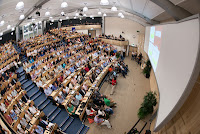 |
| Higgs Announcement at CERN |
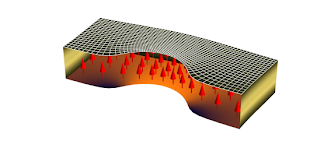 |
| Credit: Technology Review |
What makes this possible is a process known as electromagnetically induced transparency--a phenomenon in which certain materials become transparent when zapped by light from two carefully tuned lasers.
This works for materials with atoms that can exist in three different electronic states--say a, b and, the highest, c. The idea here is that the first laser beam is absorbed by the material because it excites electrons from state a to state c. The second laser is also absorbed because it excites electrons from state b to state c.
If the frequencies of the lasers are close together, they can be tuned in a way that makes them interfere destructively. And when this happens, their ability to excite electrons cancels out.
When this happens, the laser photons suddenly pass through the material unimpeded, sometimes at dramatically reduced at speeds (which is how experiments that stop light are performed).
Homer Hickam's Amazon page
...I did not come up with the title.
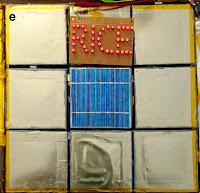 |
| Credit: Rice University |
The research, published last week in Nature, seeks a new approach to battery fabrication by using materials that can be spray-painted onto various surfaces. Combined with flexible printed circuits and research in spray-on solar cells, the technique offers the prospect of turning common objects into smart devices with computing power and storage. Another possibility is consumer electronics, such as cell phones or cameras, with a battery coating.
Technology Review: Spray-On Batteries Could Reshape Energy Storage
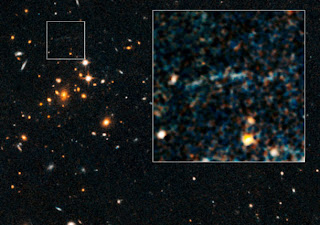 |
| Credit: Discover Magazine-Bad Astronomy, link follows |
Astronomers ran across just such thing recently. Hubble observations of a distant galaxy cluster revealed an arc of light above it. That’s actually the distorted image of a more distant galaxy, and it’s a common enough sight near foreground clusters. But the thing is, that galaxy shouldn’t be there.
More at: Bad Astronomy, Phil Plait
 |
| Image: CERN |
However...
TECHIE BUZZ:
The Higgs announcement
The announcement is expected to a big one – especially with the predicted discovery of the Higgs by the end of the year. The status of the Higgs will not be changed to ‘discovered’, but we will get to know how far we have actually reached.
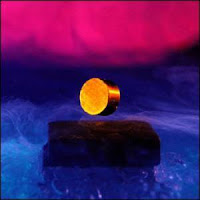 |
| Source: Science Daily |
A new study published in Science examined a particular class of high-Tc superconductor, known as an iron pnictide. ("Pnictide" refers to an atom in the same column as nitrogen in the periodic table.) K. Hashimoto et al. found evidence of a quantum critical point (QCP): a place where the material's properties change radically due to quantum fluctuations rather than changes in temperature or pressure. While many physicists suspect the presence of a QCP in high-Tc superconductors, none have found unambiguous evidence for its existence. The current study is still not definitive, but the particular iron pnictide material the researchers used provides far cleaner data—and stronger hints that the QCP is actually there. Its presence would reveal a great deal about the inner workings of high-Tcsuperconductors, perhaps helping lead to even higher temperature superconducting devices.
In the case of high-Tc superconductors, the key parameters are temperature and doping. The iron pnictide superconductor in the recent study was BaFe2(As1-xPx)2, where "x" is the doping fraction. (In this case, the pnictide is the arsenic.) The researchers picked this particular pnictide due to the ease with which pure crystals of the material can be grown and how clean the resulting data is. For x values roughly between 0.2 and 0.7, BaFe2(As1-xPx)2is a superconductor; outside those values, the material isn't superconducting at any temperature.
A QCP—if it is present—marks another type of phase transition [beyond solid-liquid-gas-plasma], where quantum fluctuations at absolute zero change the superconducting behavior of the material. While absolute zero isn't experimentally achievable, the quantum fluctuations start at (relatively) higher temperatures, changing the behavior of the flow of the charge carriers.
Ars Technica:
Quantum fluctuations may uncover a clue to high-temperature superconductivity
It's been done...I am not the one...
Physics Central: Surviving a Plunge From Space
Geez, show one scene in a reboot Trek movie...
NPR: "[Professors] are not the beneficiaries of large increases in college spending that has gone on," he says. "In fact, the percentage of all students taught by non-tenure-track professors — adjuncts, teaching assistants — has gone up and up and up."
"I'm sure that most of those people [provost, deans, assistant deans] are working hard at real jobs," he says. "But that doesn't necessarily mean that it's a good idea to increase spending and pass along many of those costs onto students in the form of higher tuition. ...
"And the more the prices go up, the more that these students who are squeezed out of opportunity are middle-income students, low-income students, and the net effect over time is to make our college and university system no longer the engine of economic mobility that it once was."
Rant done...
 |
| National Research Council |
US research universities face serious decline unless the federal government, states, and industry take action to ensure adequate, stable funding in the next decade, says a new report by the National Research Council. Universities must work harder to contain costs, enhance productivity, and improve educational pathways for students to careers both within and outside academia, the report says.
Written by a 21-member committee chaired by Bank of America chairman Charles Holliday Jr., the report responds to a request from Congress to recommend 10 actions that the nation should take in the next five to 10 years to maintain top-quality US research institutions. Among those steps, the committee urged, was that of doubling the budgets of NSF, the Department of Energy’s Office of Science, and NIST that was called for in the 2007 America Competes Act. But for fiscal 2013, the administration requested just a 4.8% increase for NSF, and a 2.4% increase for DOE’s Office of Science. Only the relatively tiny NIST R&D programs got the magnitude of increase needed to keep it on a doubling trajectory.
 |
| Credit @ link below |
Wilczek and Shapere persuasively argued that there's no reason why similar periodic structures couldn't exist in time. And they said that finding them would give physicists a new way to study the process of symmetry-breaking and the laws of physics behind it.
There was just one problem, however. These guys hadn't worked out how to build a time crystal.
Physics arXiv: Space-time crystals of trapped ions
 |
| Partnering Organizations |
Vector: National Alliance of Black Educators Endorses Physics First
PAE = Performance Art of Engineering. I'll probably elaborate in another posting. I thought it an appropriate title for the merger of science and art.
It is nice to be wanted.
See why I didn't us it for the title. 
Site: BrightRecruits.com
There's also a Sci-Fi Symposium. Astronaut Mae Jemison, M.D. is chair.
100 Year Starship invites you to participate in the journey of a lifetime! On this mission, everyone has a seat – Thought leaders, experts, trendsetters, space advocates and space enthusiasts, international space agencies, established businesses and start-ups, financiers and entrepreneurs, governmental and non-governmental agencies, universities and private industries, including entertainment, medicine, education, the arts and athletics – and, of course, the general public. You are all invited to join us on a journey to improve our world today as we explore the challenge, benefits, potentially enabling technologies, strategies and awesome potential of interstellar flight to another solar (star) system.
From exotic propulsion systems, exoplanets and “where do we go?” to the social, economic and cultural considerations of “why or should we go?” there’s a technical or academic session just for you. In addition, workshops, classes, networking venues, the Expo, entertainment, celebrities, speakers and guests will enhance your experience and ensure that you have an opportunity to consider and contribute to the wide range of space and related topics needed to chart the research, design, development, policy, outreach and aspirational activities from which long-distance space travel will be generated.
Dear Friend,
We are pleased to invite you to submit to the “Call for Papers” the upcoming 100 Year StarshipTM 2012 Public Symposium to be held in Houston Texas on September 13 – 16, 2012.
The 100 Year StarshipTM (100YSSTM) considers broad and in-depth public engagement critical to accomplishing human interstellar flight within the next 100 years. The 100YSSTM Public Symposium is central to gathering and sharing knowledge, aspirations, capabilities, as well as building advocacy, imagination and momentum. During the symposium space experts will participate in a platform for cutting-edge research, space enthusiasts will expand their knowledge, and the public will be engaged by an interactive exposition.
The Symposium’s technical session issues this open call to individuals and organizations from all disciplines—amateur and professional—to contribute to understanding, developing and building the solutions needed for successful interstellar flight.
The 2012 Symposium’s theme, Transition to Transformation...The Journey Begins, acknowledges the accomplishments of space exploration to date and calls for authors to consider what changes are needed in how we currently envision and “do space” to truly push forward humanity’s journey to another star. Papers should focus upon those transformative ideas and processes within each track—science, technology and paradigms— that facilitate the breakthroughs in space exploration.There are four technical tracks at the Symposium and a series of special sessions as described in the 2012 100YSS Call for Papers
Papers accepted will be included in the 100YSS 2012 Symposium Proceedings. Papers selected presented individually or as part of a panel as decided by each Track Chair. The Abstract Submission Deadline is June 30, 2012. Authors whose papers have been submitted for presentation will be notified by July 29; and final papers must be submitted by August 17th.
If you have any questions, please contact the 2012 Symposium Technical Chair, Dr. Richard Obousy at richard.obousy@100YSS.org. We look forward to your participation in our symposium and hope that you will submit a paper.
Sincerely,
Mae Jemison, M.D.
Chair, 100YSS Symposium
Richard Obousy, Ph.D.
Technical Chair, 100 YSS Symposium